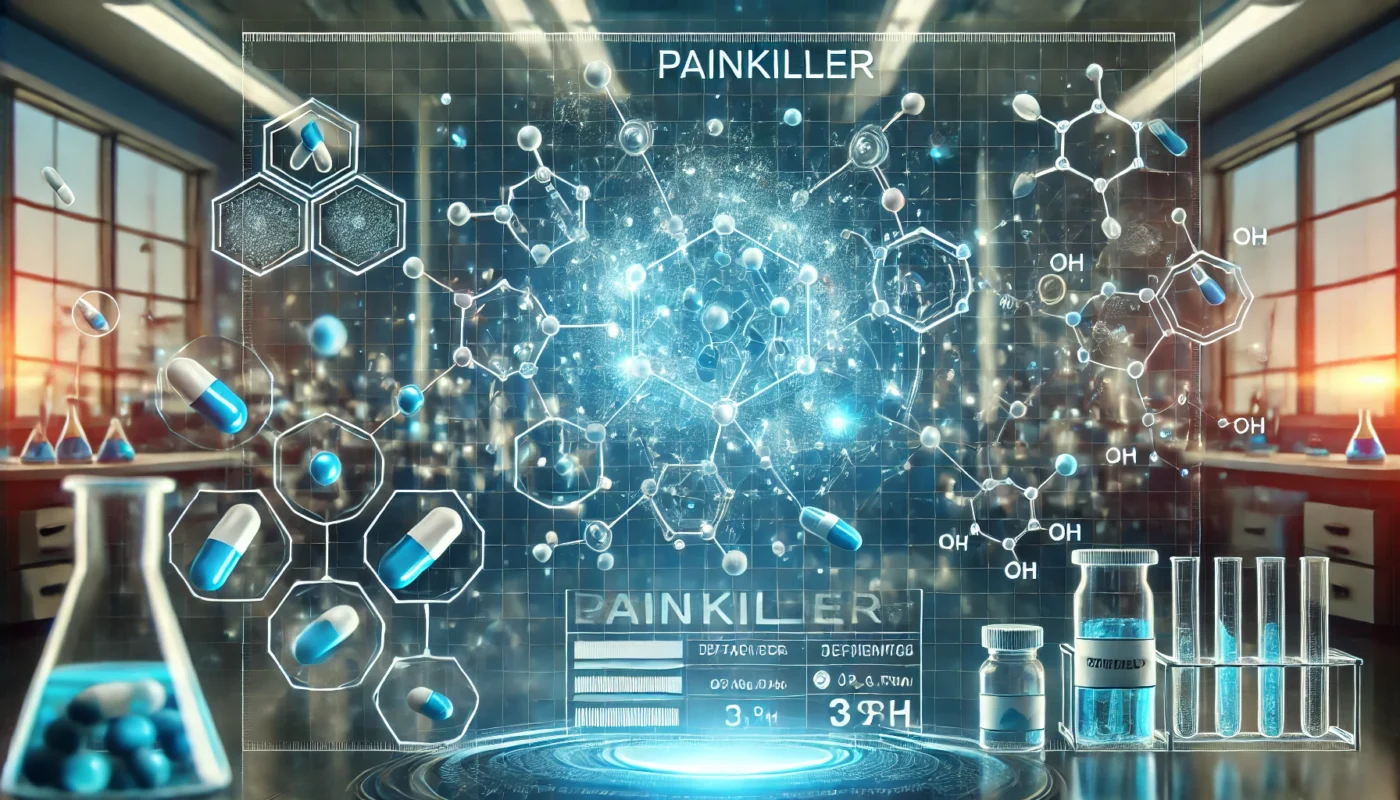Medication images play a pivotal role in identifying and differentiating various types of painkillers. They serve as a visual aid that enhances understanding, particularly for those who may struggle with medical terminology or have visual learning preferences.
You may also like: Understanding Long-Term Pain Relief Options
Enhancing Recognition and Understanding
Images of pain medications can aid in recognizing different pills, especially when names are similar. For instance, knowing the visual differences between ibuprofen and acetaminophen tablets can prevent potential mix-ups, particularly when dealing with over-the-counter medications. This visual recognition can be crucial in emergency situations where rapid identification is necessary. Moreover, visual cues can also help in understanding the brand variations of a single medication, which may differ in color or shape, thus avoiding confusion.
Visual identification is not just about recognizing pills; it extends to understanding dosage forms, such as tablets, capsules, and liquid suspensions. This knowledge is invaluable for ensuring proper administration and dosage accuracy. For example, some medications are designed to release slowly over time, and identifying these by their appearance can prevent accidental overdose by ensuring the correct form is taken as prescribed. Furthermore, understanding the visual differences in dosage forms can assist in educating younger or elderly family members about their medication routines.

Supporting Safe Usage
Visual familiarity with medication images contributes to safer use. By recognizing painkiller pills by their appearance, users can avoid taking the wrong medication, which is especially important when multiple prescriptions are involved. This practice is also beneficial for caregivers who manage medications for others. Visual identification reduces reliance on memory or labels that might wear off or become unreadable, ensuring that each dose is correct. Additionally, it can help in maintaining an accurate medication log, crucial for those under medical supervision.
For individuals with cognitive impairments or visual challenges, having a clear visual reference can aid significantly in their medication management. Caregivers can employ visual aids or charts in combination with medication images to create an easy-to-follow system. Moreover, visual identification can serve as a double-check mechanism alongside written instructions, adding an extra layer of safety in medication administration.
Common Painkillers and Their Visual Characteristics
Understanding the images of common painkillers helps in recognizing them and understanding their applications in pain management.
Acetaminophen
Acetaminophen, commonly known by the brand name Tylenol, is widely used for its analgesic and antipyretic properties. Typically, acetaminophen tablets are white and round, often embossed with a dosage number. Recognizing these characteristics can help differentiate acetaminophen from other non-steroidal anti-inflammatory drugs (NSAIDs). Additionally, some acetaminophen brands may have a distinctive scent or coating, which can further aid in their identification. It’s important for users to be aware of these subtle differences, especially when purchasing generic versions.
In some countries, acetaminophen may be packaged differently, which emphasizes the need for familiarity with both local and international presentations of this medication. Visual literacy in recognizing acetaminophen can prevent accidental overdose, particularly since it is often combined with other medications in multi-symptom cold remedies.
Ibuprofen
Ibuprofen, found in brands like Advil and Motrin, is an NSAID that provides relief from inflammation and pain. Its tablets are often oval-shaped and may come in various colors, such as orange or brown. Understanding these visual cues can aid in distinguishing ibuprofen from other painkillers like naproxen. Additionally, ibuprofen is available in both prescription and over-the-counter strengths, which may influence its appearance. Being able to visually differentiate these can be crucial for ensuring the correct dosage is taken.
The visual recognition of ibuprofen also extends to its liquid forms, often used for children. Recognizing the packaging and color of liquid ibuprofen can help parents and caregivers administer the correct dose, crucial for the safety of younger patients.
Naproxen
Naproxen, available under brand names such as Aleve, is another NSAID used for treating pain and inflammation. Naproxen tablets are typically blue and oval, helping differentiate them from other NSAIDs like ibuprofen. Recognizing these differences is crucial for managing pain effectively and safely. Moreover, naproxen is available in extended-release forms, which may look different from the immediate-release versions, emphasizing the need for visual literacy in medication management.
Visual identification also aids in recognizing potential counterfeit medications, as legitimate naproxen will have consistent branding and pill characteristics. This awareness is vital in ensuring that only safe and effective medications are consumed.
Visual Identification Beyond Over-the-Counter Medications
Prescription painkillers also require careful visual identification to ensure safe usage.
Opioids
Opioids, such as oxycodone and hydrocodone, are potent pain relievers prescribed for severe pain. These medications often have unique shapes, colors, and imprints that help in their identification. Given their high potential for addiction and misuse, accurately identifying opioid medications is imperative for both patients and healthcare providers. Visual identification helps prevent diversion and misuse, as each pill can be matched to its prescription.
Moreover, visual literacy in opioids is crucial for emergency responders who may need to quickly identify medications involved in overdose situations. Recognizing these pills can also aid in educating patients about the safe storage and disposal of unused medications, reducing the risk of accidental ingestion by children or pets.
Muscle Relaxants
Muscle relaxants, like cyclobenzaprine, are used to alleviate muscle spasms and discomfort. These medications come in various forms, with distinguishing features like color and shape that facilitate their recognition and correct usage. Proper identification helps prevent accidental misuse and ensures effective treatment. Visual cues can also help differentiate between muscle relaxants and other medications that may have similar packaging or appearance.
Understanding the visual characteristics of muscle relaxants can support adherence to prescribed regimens, particularly for patients managing chronic conditions requiring multiple medications. This awareness also assists caregivers in organizing and administering these medications correctly.

Anticonvulsants and Other Prescription Medications
Anticonvulsants and other prescription medications often used for pain management, such as gabapentin, also require careful visual identification. These medications may have complex dosing schedules and interactions, making visual recognition a key component in safe usage. By identifying these medications visually, patients can ensure they are following their prescribed regimen accurately, reducing the risk of adverse effects.
Visual literacy in these medications supports effective communication with healthcare providers, as patients can describe their medications accurately during consultations. It also aids in recognizing when a medication refill contains incorrect pills, preventing potential health risks.
Practical Strategies for Painkiller Management
Understanding painkillers through their images is just the beginning. Implementing practical strategies can enhance medication management and ensure safety.
Organizing Medications
Utilizing pill organizers with compartments for each day or dosage time can prevent accidental misuse. Aligning this with visual identification ensures that the right medication is taken at the right time, reducing the risk of errors. This strategy is particularly beneficial for individuals with complex medication regimens, as it simplifies the process and enhances adherence. Using color-coded organizers can further assist in distinguishing between different medications, enhancing visual management.
Pill organizers can also be integrated with reminder systems, such as alarms or smartphone notifications, to prompt timely administration. This combination of visual and technological aids can significantly improve medication management for both patients and caregivers.
Leveraging Technology
Apps and online resources that provide medication images and descriptions can be valuable tools for managing painkillers. Many of these platforms offer features like reminders, dosage tracking, and pill identification, making them useful for both patients and caregivers. These digital tools often include educational content about medication interactions and side effects, enhancing user knowledge and safety.
Technology can also facilitate communication with healthcare providers, enabling patients to share accurate medication lists and images during consultations. Additionally, some apps offer the ability to set up virtual medication logs, which can be reviewed by medical professionals to monitor adherence and efficacy.
Educating Family Members
Educating family members about the visual identification of medications can further enhance safety and adherence. By involving family members in the medication management process, patients can create a support system that ensures consistent and accurate administration. Family education can include sharing information about potential side effects and interactions, empowering them to recognize and address any issues promptly.
Visual aids, such as charts or flashcards, can be used to reinforce learning and assist family members in distinguishing between different medications. This collaborative approach fosters a safer environment for medication management, reducing the risk of errors and enhancing patient outcomes.
The Role of Healthcare Professionals
Collaboration with healthcare professionals is vital for effective pain management. Pharmacists and doctors are invaluable resources for verifying medication images, providing guidance on proper usage, and addressing any concerns related to painkillers.

Consulting Your Pharmacist
Pharmacists can offer insights into medication identification and management. They can help verify pill appearances and provide recommendations for safe usage, ensuring that you have a comprehensive understanding of your pain management regimen. Pharmacists are also accessible for consultations on potential drug interactions and side effects, contributing to a safer medication experience.
By establishing a relationship with a pharmacist, patients can receive personalized advice and support, enhancing their confidence in managing their medications. Pharmacists can also assist in identifying generic medication options, offering cost-effective alternatives while ensuring visual recognition remains clear.
Regular Medical Reviews
Regular consultations with healthcare providers allow for the review of pain management strategies and adjustments as needed. These discussions can include verifying the correct identification of medications and assessing their effectiveness and safety. Healthcare providers can use these opportunities to educate patients about new medications or changes in their regimen, reinforcing visual identification skills.
These reviews are essential for monitoring the long-term efficacy of pain management plans, allowing for timely interventions if issues arise. Providers can also address any concerns patients may have about their medications, ensuring a collaborative approach to treatment.
Collaborative Care Teams
Incorporating a collaborative care team approach can enhance pain management outcomes. This involves coordinating care among pharmacists, doctors, nurses, and other healthcare professionals to ensure comprehensive support for the patient. Visual identification training can be integrated into this collaborative approach, ensuring all team members are aligned in their understanding of the patient’s medication regimen.
By fostering open communication and sharing expertise, collaborative care teams can optimize pain management strategies, addressing both the physical and psychological aspects of pain. This holistic approach supports patient well-being and promotes successful treatment outcomes.
Conclusion: Visual Literacy in Pain Management
Visual literacy in medication identification is a crucial component of effective and safe pain management. By understanding painkillers through their images, you can enhance your knowledge and ensure the correct and safe use of these medications.
Embracing a proactive approach that combines visual identification with professional guidance and practical strategies will empower you to manage pain effectively and improve your overall health and wellbeing. This comprehensive understanding fosters a more informed and confident approach to medication management, supporting long-term health and quality of life.
Further Reading:
pill organizers, medication management, visual identification, pain management, healthcare professionals, medication adherence, technology in healthcare, patient education, pharmacist consultation, collaborative care, medication safety, digital tools, family involvement, medication reminders, visual aids
Important Note: The information contained in this article is for general informational purposes only, and should not be construed as health or medical advice, nor is it intended to diagnose, prevent, treat, or cure any disease or health condition. Before embarking on any diet, fitness regimen, or program of nutritional supplementation, it is advisable to consult your healthcare professional in order to determine its safety and probable efficacy in terms of your individual state of health.
Regarding Nutritional Supplements Or Other Non-Prescription Health Products: If any nutritional supplements or other non-prescription health products are mentioned in the foregoing article, any claims or statements made about them have not been evaluated by the U.S. Food and Drug Administration, and such nutritional supplements or other health products are not intended to diagnose, treat, cure, or prevent any disease.

